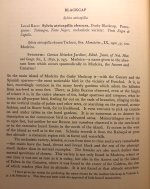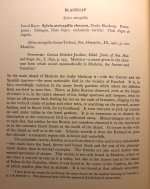Taphrospilus
Well-known member
Publication dates "Analyse d'une nouvelle ornithologie élémentaire" de Vieillot. I am just wondering if this is an error in Avibase Avibase - The World Bird Database There is written he book was published between 1811 and 1816 but only this two entries are not from 1816
Vanellus Brisson, 1760 seems anyway not Vieillot (even if we find the name p. 55) ODs t.1 (1760) - Ornithologie, ou, Méthode contenant la division des oiseaux en ordres, sections, genres, especes & leurs variétés - Biodiversity Heritage Library and t.5 (1760) - Ornithologie, ou, Méthode contenant la division des oiseaux en ordres, sections, genres, especes & leurs variétés - Biodiversity Heritage Library
Caccicus Vieillot, 1816 seems to be a synonym to Cacicus Lacépède, 1799 Discours d'ouverture du Cours d'histoire naturelle (not sure why Ilgner, 1811 Cacicus (Cassicus) (Cassicus sp. (Cacicus)) - Avibase
I would go the whole book is 1816. Is this correct?
| Cassicus | 1811 | |
| Vanellus | 1815 |
Vanellus Brisson, 1760 seems anyway not Vieillot (even if we find the name p. 55) ODs t.1 (1760) - Ornithologie, ou, Méthode contenant la division des oiseaux en ordres, sections, genres, especes & leurs variétés - Biodiversity Heritage Library and t.5 (1760) - Ornithologie, ou, Méthode contenant la division des oiseaux en ordres, sections, genres, especes & leurs variétés - Biodiversity Heritage Library
Caccicus Vieillot, 1816 seems to be a synonym to Cacicus Lacépède, 1799 Discours d'ouverture du Cours d'histoire naturelle (not sure why Ilgner, 1811 Cacicus (Cassicus) (Cassicus sp. (Cacicus)) - Avibase
I would go the whole book is 1816. Is this correct?









